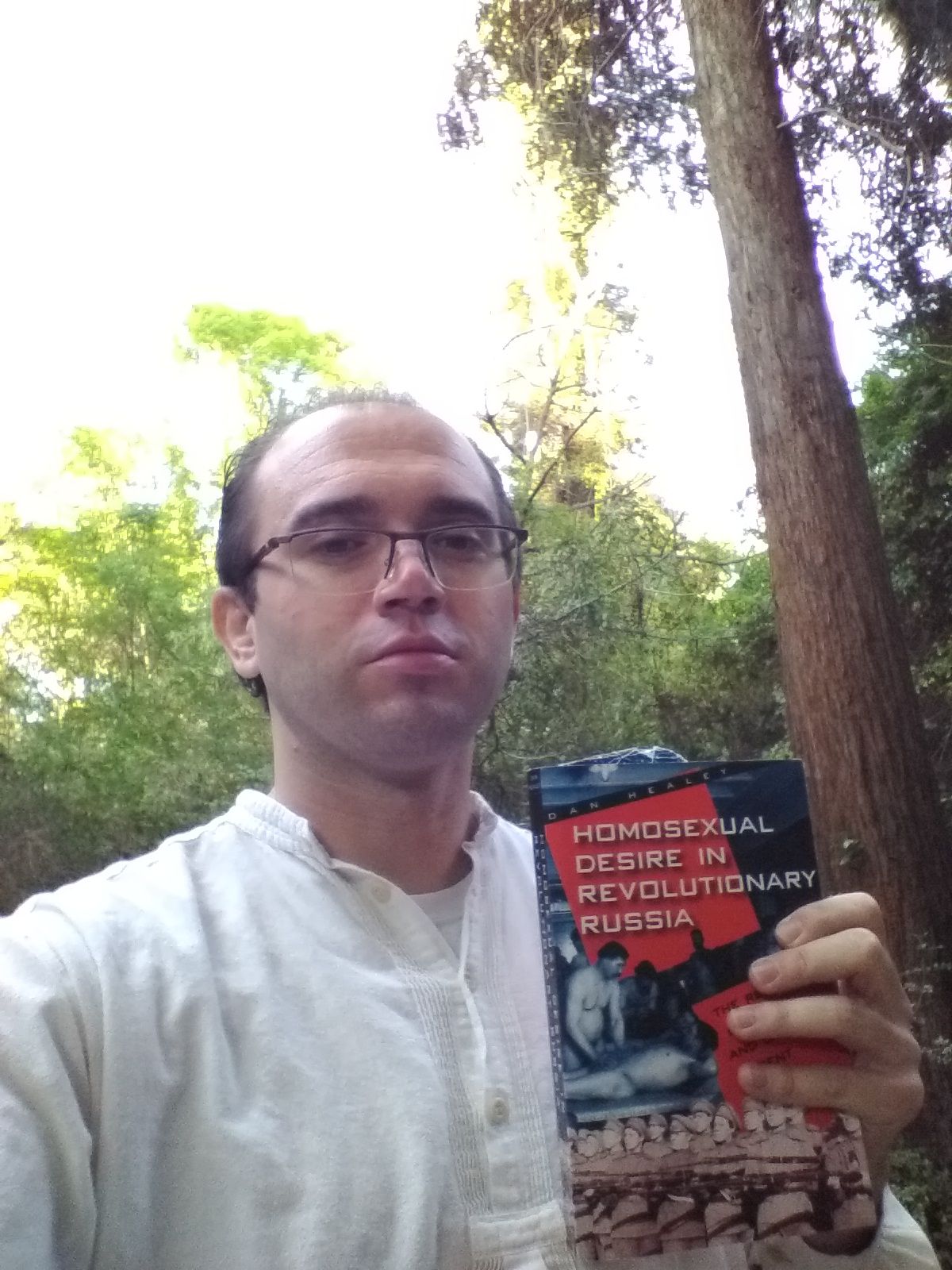This is the first entry in a two-part response to Thomas Wilson Jardine's December 2020 essay, ‘Cyberpunk: An Empty Rebellion?’ In part one, we introduce the late historian Richard Stites' framework on the speculative critique of ‘capitalist hells,’ and provide a number of examples of science fiction functioning as protest art. In part two, we will focus on Stites' concepts of ‘communist heavens’ and ‘alternative, anti-modern utopias,’ analyzing Kim Stanley Robinson's literature and the Deus Ex game universe as case studies.
‘The concept of progress is to be grounded in the concept of catastrophe. That things 'just go on' is the catastrophe. It is not that which is approaching but that which is. [August] Strindberg's thought: Hell is not something which lies ahead of us—but this life here.’ – Walter Benjamin[1]
In a world facing uncertain, bleak, and even terminal futures, capitalist media companies compete to maximize their market share by exploiting humanity's artistic, political, and erotic fantasies. Simply put, the culture industry cynically sells our symbolic rebellions against oppression and dehumanisation back to us. Still, our individual and collective psychosocial reveries can be interpreted, at least in part, as compensatory means of coping with capital's nihilistic, destructive impetus. Seen in this light, such emotional coping mechanisms serve the important ends of mental health and survival.
At the same time, writing in The Commoner in December 2020, Thomas Wilson Jardine rightly underscores the risk that the increasing incorporation of critical, anti-authoritarian themes into such media as film and video games may ultimately just prey on our alienation and promote ‘interpassivity.’ The danger is that audiences will passively consume the recuperation of ‘revolutionary iconoclasm,’ or ‘the abolition of authority, authority figures,’ and ‘master symbols,’ in ways that merely reproduce what the French Situationist Guy Debord famously termed ‘the society of the spectacle.’[2]
In this essay, I want to question whether the dynamic between art and audience is so straightforward. Do the iconoclastic themes and fantasies which writers, artists, and game developers incorporate into speculative fiction only serve to reproduce class society and social hierarchy in themselves and their consumers?
Reflecting on the genres of cyberpunk and steampunk, I agree with Jardine that there is a strong risk of interpassivity, of psychic substitutionism, and of what an implanted-memory salesman from the film Total Recall (1990) terms 'a vacation from the self,' otherwise known as ‘LARPing’ (live-action role-playing). Games like Deus Ex (1999), BioShock (2007), or Ascent (2021), which incorporate subversive cyberpunk and steampunk themes, are rather different from the traditional action games, like the Counter-Strike (2000), Battlefield (2002), or Call of Duty (2003) series, which glorify militarism and the War on Terror. To this point, Brie Code, founder of the Tru-Luv development studio, comments that the gaming industry 'has focused on a narrow subset of human psychology for several years,' specifically 'help[ing] people feel a sense of achievement or dominance.' In this sense, titles with cyberpunk or steampunk themes may attract different ‘markets’ for game corporations: perhaps ones that are comprised of those who are younger, and/or more politically progressive or radical.
Even so, the gaming experience depends upon the alienated labor of developers, together with that of miners and electronics workers, all of which is made invisible, according to Karl Marx's concept of commodity fetishism. To this point, Jardine critiques Cyberpunk 2077 (2020), one of the industry's most highly-anticipated games, which cost over $300 million to produce. They write, ‘I do not see V (your character) and Johnny Silverhand going to establish a better or new system and uniting the exploited cyborg proletariat in a popular uprising against Arasaka and Militech [corporations].’ As I have not played Cyberpunk 2077, I cannot comment on this particular aspect of the plot, much less any other.
Be that as it may, in keeping with the utopian origins and function of speculative fiction, subversive social commentary is relayed, and social revolution even envisioned, in certain games. Red Faction (2001), for instance, begins with a miners' strike on Mars, echoing the revolutionary fantasy of worker unrest and heroic anti-capitalism on the red planet in Total Recall. As this dynamic suggests, compared with the relatively new medium of video games, literature and film have had an expansive history of promoting humanist, anti-authoritarian, and ecological themes, thus advancing what Walidah Imarisha calls ‘[v]isionary fiction’: namely, speculative art that seeks to build ‘new, freer worlds,’ starting with the decolonization of the mind.[3] In this multi-part essay, we emphasize the continuities among literature, film, and games as protest art in this sense. We will see how reason and emotion are intimately tied to the struggle for individual and collective liberation. We will explore some of the links between history and the present, and see how the best sci-fi operates through the critical displacement—or defamiliarisation—of infernal capitalist modernity.
A Brief History of Speculative Fiction and Protest Literature
Speculative, visionary fiction has an enduring history. In 421 C.E., the Chinese writer Tao Qian (365-427) composed ‘Peach Blossom Spring.’ This is a tale about a fisherman who discovers a utopian community located in a high valley at the terminus of a river lined with pink peach trees. The villagers of this exilic Daoist space, a ‘level land’ wherein ‘white-haired elders and tufted children alike were cheerful and contented,’ are either unaware of the Qin and Han imperial dynasties, or do not recognise them, for their ancestors had fled from the centralising Chinese State. Like the Cossack communities founded by peasants, who avoided serfdom by ‘exiting’ from early State formation in Russia during the fifteenth through seventeenth centuries,[4] the Daoist community at the source of the peach blossom stream ‘had first left men's society to escape the troubled world.’ In 718, the poet Wang Wei (699-759) expanded on this vision, imagining that the inhabitants of this community ‘were peaceful, calm, [and] kind,’ and the valley ‘fertile and full of animals.’
‘We stayed until we saw what it was: a good place.
To live here would be fulfillment.’
Moved by his experience, the narrator returns home, seeking to resettle with his family in this utopia. However, upon setting out to move there, they ultimately cannot find the community, for it was but a ‘moment in time’—or maybe just a dream, after all.[5]
In a similar vein, the Indian poet Guru Raidas (c. 1450-1520) envisioned Begumpura, a ‘land without sorrow,’ five centuries ago:
‘The regal realm with the sorrowless name:
they call it Begumpura, a place with no pain,
No taxes or cares, none owns property there,
no wrongdoing, worry, terror, or torture.
Oh, my brother, I've come to take it as my own,
my distant home where everything is right.
That imperial kingdom is rich and secure,
where none are third or second – all are one;
They do this or that, they walk where they wish,
they stroll through fabled palaces unchallenged.
Oh, says Ravidas, a tanner now set free,
those who walk beside me are my friends.’
This Begumpura, as the Dalit anarchist Pranav Jeevan P comments, is a stateless, classless, and casteless commune. It represents the ‘imagination [mobilizing] against caste, class, state, Brahmanical hierarchies and patriarchy,’ and foreseeing a ‘society living in harmony and free from all forms of discrimination.’ Considering the humanistic, emancipatory impulses that inform this dream, together with its continued acute relevance, both in BJP-dominated India and beyond, Pranav invites us to engage and re-engage with such visions, and ‘work towards creating our [own] Begumpura.’
Fast-forward to Summer 1816. The English novelist Mary Shelley (daughter of the proto-anarchist William Godwin and the feminist Mary Wollstonecraft), while visiting Switzerland with her husband (the Romantic poet Percy Bysshe Shelley), produced Frankenstein, or the Modern Prometheus (1818), in response to Lord Byron’s bid for a competition to see who could write the best horror story. Composed on the shores of Lake Geneva, this Gothic art-work is often considered the first example of modern science fiction. The ghastly novel, bearing the imprints of the thought both of the author's parents, as of the Swiss-born philosophe Jean-Jacques Rousseau, depicts the ‘mad scientist’ Victor Frankenstein, who successfully creates a humanoid assembled from body parts of the deceased in his laboratory. This creature, who is physically strong and loving yet anxious and hideous, is rejected both by Frankenstein and by society at large. Viewed as a ‘monster, a blot upon the earth,’ and denied fellowship and sexual satisfaction, the Creature declares ‘ever-lasting war against the species.’[6] The nameless Creature poses the question: ‘Am I thought to be the only criminal, when all human kind sinned against me?’[7]
This allegory functions as a sympathetic portrayal of human development, feminist and Romantic commentary on ableist social relations and the Promethean-masculinist ethos of capitalism, plus an endorsement of sociological approaches to criminology that would incorporate consideration for environmental and psychosocial factors driving crime. Its message runs parallel to Percy Shelley's own Prometheus Unbound (1820), a lyrical drama which presents its author and his characters as Romantic heroes. From Ursula K. Le Guin in The Left Hand of Darkness (1969) to the creators of the eco-documentary Chasing Ice (2012), many have rendered homage to Frankenstein's climactic chase in the Arctic.
In the conclusion to his latest novel, The Ministry for the Future (2020), sci-fi writer Kim Stanley Robinson suggests that the utopian socialist Charles Fourier was a ‘secret influence’ on the visionary French novelist Jules Verne, author of Twenty-Thousand Leagues Under the Sea (1870) and Around the World in Eighty Days (1872), among other works.[8] In like fashion, the late historian Richard Stites finds that, in the wake of the Russian Revolution which overthrew Tsarism and landlordism, ‘[t]en editions of Fourier's works appeared between 1917 and 1926 and many books about his ideas. [Fellow utopian socialists] Owen, Cabet, Buchez, Blanc, St. Simon and others enjoyed new translations in the 1920s. Their influence on the science fiction of the period is apparent, though never acknowledged.’[9] A similar story could be told in 2021, a century after the Czech artist Karel Čapek wrote Rossum's Universal Robots (1921). This was the first work to envision synthetic ‘robots,’ or slave workers, who would replace human labourers and soldiers, and ultimately rise up and destroy humanity—as the Terminator series likewise foresees. Like today's producers of science fiction, and especially climate fiction, who often convey either pessimistic ‘grimdark’ or optimistic ‘solarpunk’ messages, speculative writers from Russia's early Soviet period often focused on social and political problems in their production of what amounted to protest literature.
The late Howard Zinn defined protest literature as ‘any form of communication that engages social consciousness and may move someone to action.’ It is similar to the genre known as social science fiction, which includes such titles as Plato's Republic (c. 375 B.C.E.) and Thomas More's Utopia (1516). There was also the radical intelligentsia who, in their artistic, subtle, and indirect ways, crucially defamilarised Tsarism in the nineteenth century, and so inspired the Russian Revolution. Following from their example, Soviet speculative writers expressed themes critical of capitalism, militarism, ‘Taylorist exploitation, death weapons, and mad scientists.’[10] Most sci-fi in our own time, whether developed primarily with society or profit in mind, is an adaptation of precisely this ‘revolutionary critique of the old world’ from a century ago, in a reflection of the staying power of hierarchy, brutality, and irrationality.[11]
Thus, in the following two parts of this article, we will trace the continuities of utopias (and dystopias) in time, between past and present. Starting from the Freudian idea that fantasy disguises an unconscious desire for wish-fulfillment, we will see how speculative exercises in ‘[t]aking off into a better world’ are linked with the goal of overcoming ‘capitalist hells,’ reaching ‘communist heavens,’ and so integrating our deepest hopes with reality.[12]
Special thanks to our patrons, John Walker, BoringAsian, Mr Jake P Walker, Joseph Sharples, Josh Stead, Dave, Bliss, Hol, Aryeh Calvin, Rylee Lawson, Meghan Morales, Kimonoko, Squee, Manic Maverick, Max Dixon, Maria Rahim, Balaclava Bandit, Henri Affandi, and Cass.
Please consider giving us your support:

[1]Walter Benjamin, 'Central Park,' New German Critique, no. 34 (1985), 50. Emphasis in original.
[2]Richard Stites, Revolutionary Dreams: Utopian Vision and Experimental Life in the Russian Revolution (Oxford: Oxford University Press, 1989), 183; Hans Gerth and C. Wright Mills, Character and Social Structure: The Psychology of Social Institutions (Routledge: London, 1954), 276.
[3]Walidah Imarisha, 'Introduction' to Octavia's Brood, eds. Adrienne Marie Brown and Walidah Imarisha (AK Press/Institute for Anarchist Studies, 2015), 4.
[4]Andrej Grubačić and Dennis O'Hearn, Living at the Edges of Capitalism: Adventures in Exile and Mutual Aid (Berkeley: University of California Press, 2016), 48-62.
[5]Kim Stanley Robinson, Red Moon (New York: Orbit, 2018), 344.
[6]Mary Shelley, Frankenstein, or the Modern Prometheus (London: Penguin, 2003), 123, 138, 150.
[7]Ibid, 224.
[8]Kim Stanley Robinson, The Ministry for the Future (New York: Orbit, 2020), 558.
[9]Stites 168 (emphasis added).
[10]Ibid, 180.
[11]Ibid, 236.
[12]Ibid, 171-4; Rosemary Jackson, Fantasy: The Literature of Subversion (London: Routledge, 1981).



